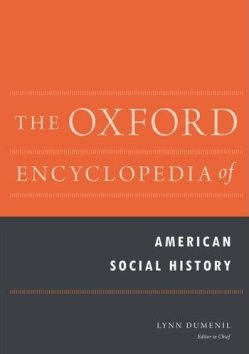|
“Internal Migration: Twentieth Century and Beyond ”
by James N. Gregory
This essay is published in in Oxford Encyclopedia of American Social History, ed., Lynn Dumenil (New York: Oxford University Press, 2012), 540-45. |
| 
James N. Gregory has published two books and several articles (four on-line below) on the Great Migration and other American internal migrations
The Southern Diaspora: How The Great Migrations of Black and White Southerners Transformed America (Chapel Hill: University of North Carolina Press, 2005). Winner of the 2006 Philip Taft Labor History Book Prize.
American Exodus: The Dust Bowl Migration and Okie Culture in California (New York: Oxford University Press, 1989).Winner of the 1991 Ray Allen Billington Prize from the Organization of American Historians; winner of the 1990 Annual Book Award from the Pacific Coast Branch of the American Historical Association
“Paying Attention to Moving Americans: Migration Knowledge in the Age of Internal Migration, 1930s-1970s,” Migrants and Migration in Modern North America: Cross-Border Lives, Labor Markets, and Politics in Canada, the Caribbean, Mexico, and the United States, eds. Dirk Hoerder and Nora Faires (Durham: Duke University Press, 2011)
“The Second Great Migration: An Historical Overview,” African American Urban History: The Dynamics of Race, Class and Gender since World War II, eds. Joe W. Trotter Jr. and Kenneth L. Kusmer (Chicago: University of Chicago Press, 2009)
"Southernizing the American Working Class: Post War Episodes of Regional and Class Transformation," Labor History 39 (May 1998). A Labor History Forum article with comments by Thomas Sugrue, Grace Elizabeth Hale, and Alex Lichtenstein, and response by author
"The Southern Diaspora and the Urban Dispossessed: Demonstrating the Census Public Use Microdata Samples." Journal of American History 82 (June 1995).
"Dust Bowl Legacies: The Okie Impact on California 1939-1989" California History (Fall 1989) |
This essay explores the changing patterns of mobility and migration from 1900 to 2010, demonstrating the increase in mobility through the middle decades of the 20th century and declining rates since the 1970s, while highlighing the various consequential migrations that have transformed cities, suburbs, regional demography and American politics.
----
Migration is one of the great forces of history. When people move in large numbers, they sometimes rearrange not only their own lives but also the places they leave and the places they settle. Migration can rebalance economies, reorganize politics, transform cultures. Migrations across oceans and borders have continually reshaped the United States. Internal migrations have been at times nearly as significant.
Mobility and Migration
Measuring mobility and identifying historically significant migration patterns is far from simple, especially before the 1940s. Since 1948 the Census Bureau’s Current Population Survey (CPS) has provided a yearly estimate of how many Americans change residences and some indications of the dimensions of the move. From 1948 to 1971 the annual relocation rate held steady at 19 to 20 percent, meaning that one-fifth of the population changed residence every year. Other than World War II and probably World War I, this was the high-water era of geographic mobility in the twentieth century. Relocations were less frequent in the early decades of the century and also slowed measurably since the 1970s. From 2006 to 2010, 12 to 13 percent of Americans have moved each year.
Most moves cover short distances and have modest implications. The term “migration” is usually reserved for moves that cross county or state lines. In CPS data, on average 6.5 percent of Americans migrated from one jurisdiction to another each year from 1948 to the 1970s, 3.3 percent of them to a different state. Since 1975 an average of 2.6 percent of Americans has crossed state lines each year.
Although annual mobility rates from earlier periods are not known, birthplace information from the U.S. Census can be used to compare migration across state lines for each decade since 1850. Demographers describe a U-shaped pattern. Migration rates across state lines were very high in the mid-nineteenth century as farmers and slaveholders moved west into the Ohio and Mississippi valleys. Rates declined after the 1870s, then began climbing with the new century, reaching a peak around the 1970s. In 1860, 41 percent of all U.S.-born adults lived outside their state of birth, and in 1900, 32 percent did. That percentage held steady until 1950, then rose to 39 percent by 1980, then retreated slightly to 38 percent by 2007.
Consequential Migrations
All moves are consequential for the individuals involved, but some migration patterns have broader implications. The twentieth century witnessed a number of consequential migrations that helped reshape culture, politics, or economic structures.
No pattern was more important than the move from farm to city. A nation of farmers became a nation of urbanized workers in the twentieth century, although the trend began much earlier. By 1920 a majority of Americans had moved to areas designated “urban.” By 1970 the rural population had shrunk to 27 percent, and only 4 percent still lived on farms. This rural-to-urban migration was more than spatial. It meant a dramatic change in occupation and way of life, a change that has been the focus of generations of social research and social policy. It also meant huge changes in political economy. Farm-belt power drained into the cities along with farm people. The decades of rapid urbanization from the 1920s through the 1960s were also the decades when big cities dominated national political agendas.
|